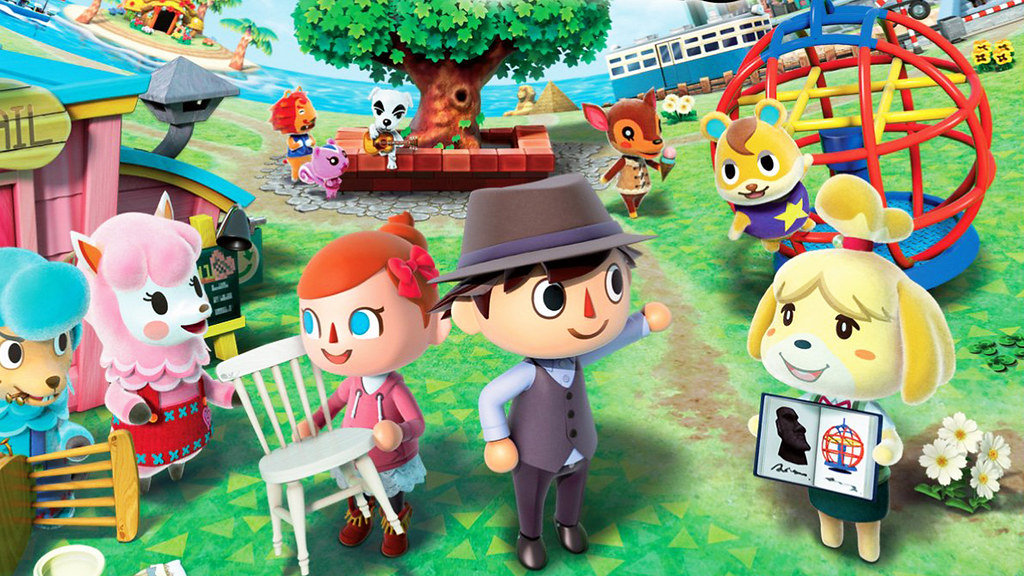Abundance is another key feature in cozy games. This refers to low level Maslow needs that are being met or fulfilled such as food or shelter. It also involves the appreciation of beauty by the player playing the game. Softness is the final key factor within cozy games. This refers to the strong aesthetic signals sent out by the game that tells players that they're in a stress free environment. The stimulus of a cozy game is always gentle and comforting. Cozy games grasp the player and introduces them to the intimacy of space and emotion. Softer stimuli involves humanity, authenticity and sincerity.
The article then goes on to discuss the contributing factors that make a cozy game cozy. Fulfilling the players needs is important. The player sees the first game play as a form of safe practice while they see the second game play as a means of satisfying unmet needs. Cozy games also promote connectedness and self-reflection. The article then proceeds by talking about cozy negating factors which consist of responsibility, intense stimulus, unpleasant distractions and extrinsic rewards. An example of negating coziness is receiving a notification while playing a game. The experience is ruined by the loud noise which is an intense stimuli and it's also non-consensual.
Cozy adjacent is the next part of the article which involves themes and aesthetics. Some of the factors listed here are Cute and Home. The cute aesthetic also can involve threatening and needy things that can be cute without coziness. Home aesthetics talks about how home environments are often stressful or full of responsibility which negates the coziness.
Next the article touches on why we should make cozy games. The benefits of these games are that they attract a better community and increase retention by minimalising churn. Blue Ocean products for unmet player motivations talks about the element of a flight or fight response theory. This theory suggests that when our sympathetic nervous system kicks in due to a received threat, we will run or attack.
Next we learn the process of how to improve community relations. Here it's suggested that mechanics generate emotions within the player and that emotions attract players. Social norms also spread and the developers reap what they sow. Cozy design principles are the next subject. This discusses how cozy is an adjective which means it's an aesthetic goal that can be applied to any underlying type of game. Coziness is also player dependent. It depends on where the player is coming from before they start the game. Coziness can be encouraged not forced.
Patterns of cozy aesthetics states that cozy elements are sensory clues that are familiar with the player from previous gaming experiences, intentionally evoke images of safety and softness and that contrast is shared refuge from less pleasant external environments which takes the player away from reality. Some ingredients of cozy aesthetics include abundance and smooth transitions. Abundance refers to elements such as food/drink/warmth that's provided by a kitchen or tavern environment etc. Smooth transitions include gentle gradients between colours or states within the cozy area.
Cozy visuals are the next topic of discussion in the article. These involve warm toned colours with a gentle colour palette such as oranges or yellows. Warm lighting and low ambiance are also involved. Natural materials are another factor of cozy visuals which include stone, wool, wood and fur etc.
Cozy audio is also important to include in a cozy game as it sets the mood. Music should be ambient with gentle acoustics, jazz and possibly dynamic. Soothing sounds include waterfalls, rivers, rain, cats purring and gentle fire. Possible cozy locations should be sociable but private, transition spaces without danger and also places that fulfill basic player needs. The article also lists some seasonal coziness elements. Suggested cozy items include hobby/crafty items such as cut flowers and physically comforting items such as blankets. An example used here is Animal Crossing a New Leaf. In this game there are numerous activities such as fishing, decorating and gardening.
Finishing up the article finally talks about the topic of patterns of cozy characters. These characters should possibly have a soothing voice (Bob Ross is used as a great example here) and appear soft and cuddly such as Totoro. The mechanics of cozy social situations are important. Players should portray politeness, consent and protection from threats. The article also touches on the subject of gifting in games. Some factors to consider here is the persons interaction with the gift, the care delivering the gift and the effort sourcing the gift. A gift may not always be returned if the player sends one so it's important to have respect and be polite either way!
There's also the challenge of too much coziness. This could include forcing intimacy or having a lack of dissent.
Overall I found this article to be very informative and interesting. I enjoyed learning more about what cozy games are and what makes them cozy games. I'd recommend this article to anyone looking to create a cozy game similar to that of Animal Crossing.
Items of interest:

Animal Crossing
No comments:
Post a Comment